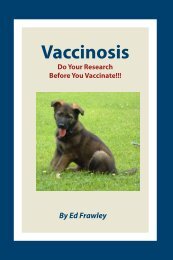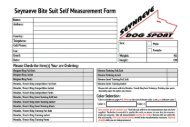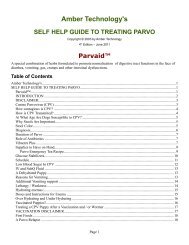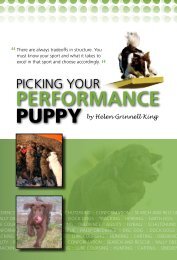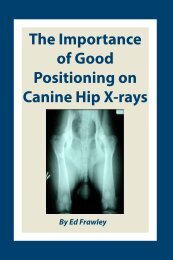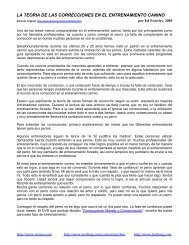Comparison of Stress and Learning Effects of Three Different ...
Comparison of Stress and Learning Effects of Three Different ...
Comparison of Stress and Learning Effects of Three Different ...
Create successful ePaper yourself
Turn your PDF publications into a flip-book with our unique Google optimized e-Paper software.
. Behavioral Indicators <strong>of</strong> Acute <strong>and</strong> Chronic <strong>Stress</strong><br />
BURCHFIELD (1979) defined acute stress as ‘’any event which occurs within a given<br />
(usually short) time period <strong>and</strong> does not reoccur frequently, if at all’’ <strong>and</strong> chronic stress as ‘’a<br />
stimulus to which the organism is continuously exposed’’.<br />
FRIEND (1991), however, stated that differentiating between acute <strong>and</strong> chronic stress<br />
situations is difficult <strong>and</strong> there are no exact definitions for guidance. Yet, some generalized<br />
<strong>and</strong> largely duration-dependent distinctions in the reactions <strong>of</strong> animals can be made.<br />
c. Behavioral Indicators <strong>of</strong> Acute <strong>Stress</strong><br />
Acute fear <strong>and</strong> pain can easily be recognized in most animals through behavioral signs: ‘’the<br />
animal’s posture will make it look smaller: it may crouch <strong>and</strong> perhaps even tremble or sweat.<br />
An animal in acute pain may vocalize in an intense manner, attempt to escape the source <strong>of</strong><br />
the pain, <strong>and</strong>, if escape is not possible, become frenzied or aggressive towards the perceive<br />
source <strong>of</strong> pain. Animals also will turn their heads or avert their eyes from the source <strong>of</strong> fear<br />
<strong>and</strong> will <strong>of</strong>ten defecate. In some situations, overreaction to stimuli may occur, even showing<br />
fear toward stimuli that normally would not be frightening’’ (FRIEND 1991).<br />
<strong>Different</strong> researchers emphasized on several behavioral elements <strong>of</strong> acute stress in different<br />
animals. In this part, however, mainly the acute behavioral stress indicators in dogs will be<br />
discussed since this study has been examined in dogs.<br />
SOKOLOV (1960) pointed out that orientation reactions, namely the physiological changes<br />
alerting <strong>and</strong> preparing the animal for the action, are the first behavioral responses when an<br />
animal is subjected to environmental challenge. They are, however, not the indicators <strong>of</strong> a<br />
stress situation. When an animal is exposed to stress, startle responses <strong>and</strong> defensive or flight<br />
reactions <strong>of</strong>ten follow the orientation reactions.<br />
Startle responses are acute responses comprising postural changes, jumps <strong>and</strong> vocalizations,<br />
which include ‘’cessation <strong>of</strong> previous activity such as resting, feeding or grooming, followed<br />
by initiation <strong>of</strong> immobility, a posture that allows flight, defense, a jump or other sudden<br />
movement, <strong>and</strong> <strong>of</strong>ten the production <strong>of</strong> characteristic sounds’’ (BROOM <strong>and</strong> JOHNSON<br />
1993).<br />
- 16 -




